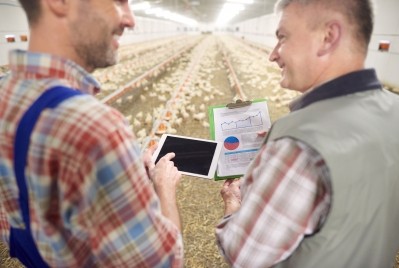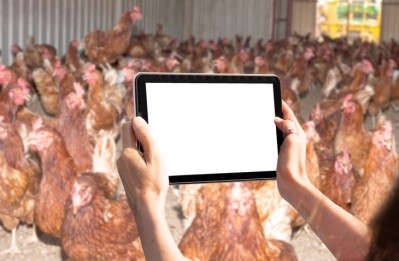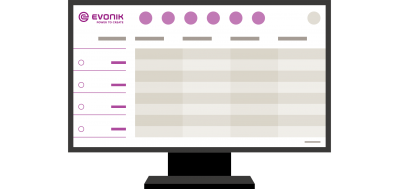‘Chicken farm of the future will be fully digitalized’

It also said precision farming could bring economic advantages for producers.
Predicting that the chicken farm of the future will be fully digitalized, Evonik said producers will rely on the use of intelligent sensors and integrated systems to generate optimal climate conditions.
Animal health will be continuously monitored to determine what clucking, for example, says about the mood in the barn, whether the flock’s body temperature is at a normal level or whether the animals are eating and drinking enough, said the German group.
These farms will use sensors and microphones to provide such information, while specialized software will analyze the collected data, it added.
In the event of questions and problems, a support system comprising self-learning artificial intelligence components will help, said Evonik.
"Consumers will get access to data as well: A wealth of important information will create transparency about animal farming, breeding and slaughtering."
The Germany company said its researchers and developers have already started to work on precision livestock farming (PLF) for poultry; it said it plans to dig deep into both its own data, those of scientific studies, and those of customers to support its PLF platform.
Gut models
Along with its PLF work, Evonik said it is relying on models to better understand the complex processes in a chicken’s digestive system.
It has been working on a gut simulation model since late 2015 within the scope of the Good Bacteria and Bioactives in Industry (GOBI) innovation alliance, a project funded by the German Federal Ministry for Education and Research.
That gut model is intended to reflect the interactions between feed, the immune system and the intestinal flora and will enable the testing of feed additives such as probiotics.
“Animal health is a top priority for Evonik in NPD, and its scientists consider the chicken gut a decisive element. This is the location where feed is digested and where important immune functions are situated—many infectious diseases have their origin in the gut.”
When speaking to this publication previously, Dr Emmanuel Auer, head of the animal nutrition business line at Evonik, expanded on the workings of the chicken gut simulation model:
“Host microbe interactions will be simulated by cell line experiments. Dedicated cell lines will mimic the chicken intestinal mucosa allowing us to analyze the effect of feed additives, such as probiotics on invading pathogens as well as the potential immune modulation properties [of additives] by measuring levels of cytokine expression.”
He added that the major advantage of that model would be the flexibility to adapt the system to region and customer specific diets, pathogens and further environmental factors.








